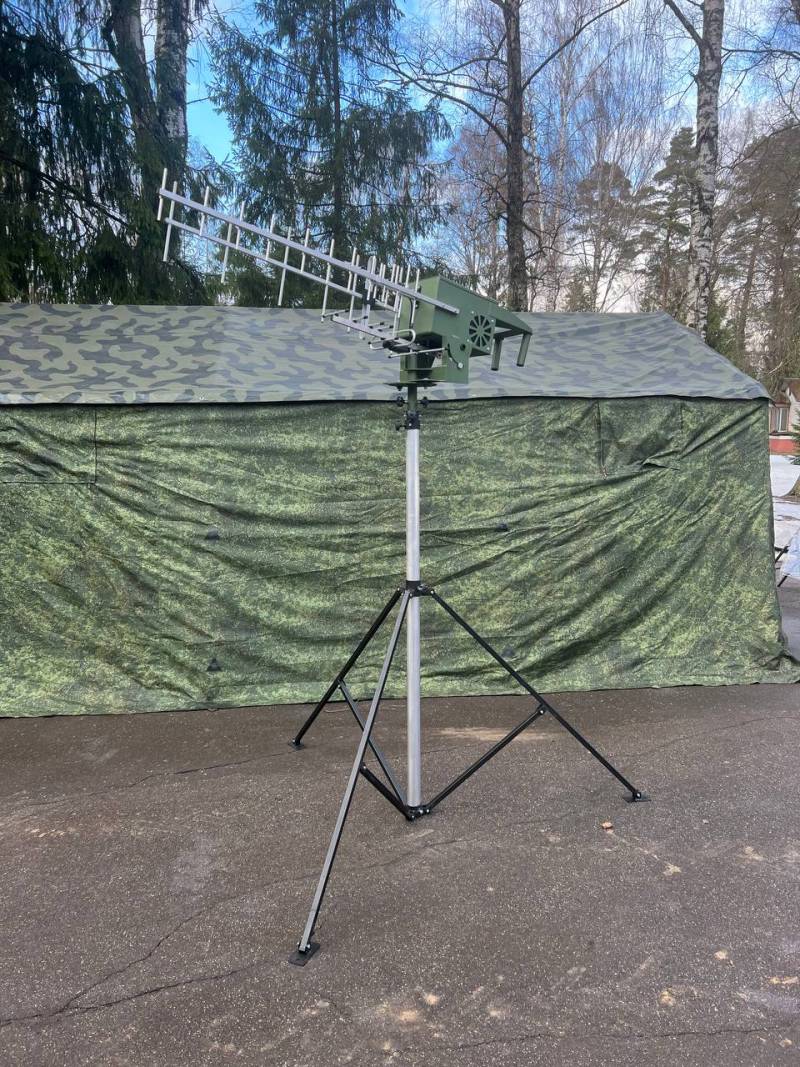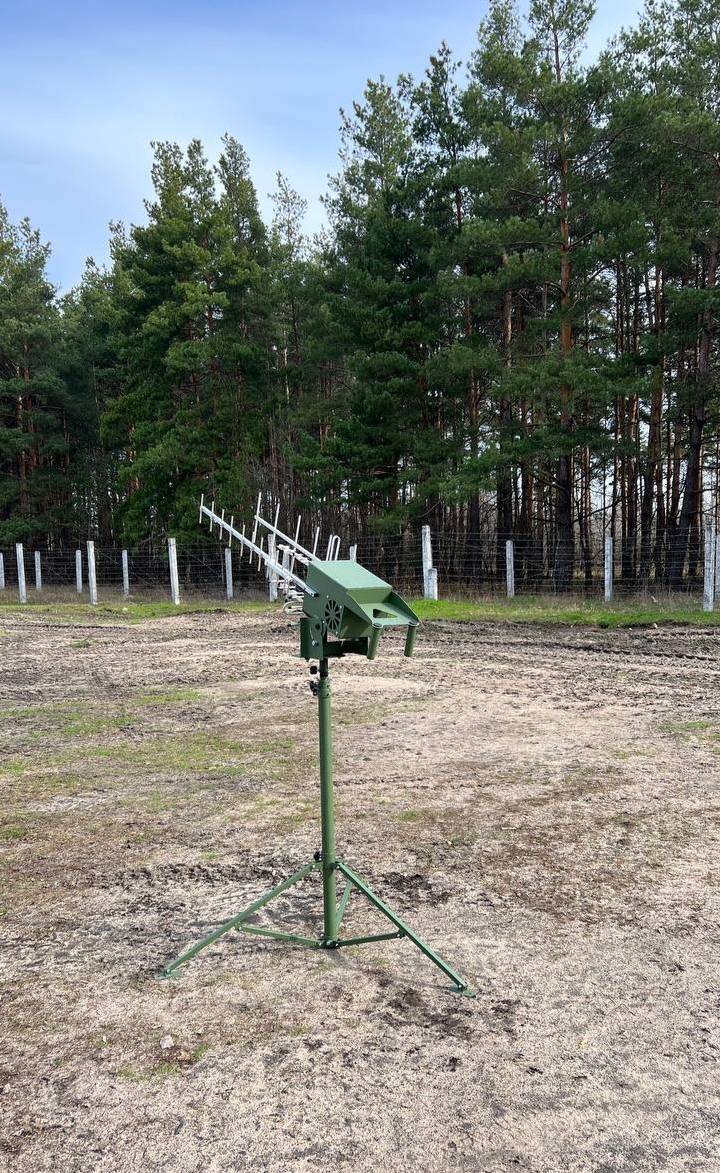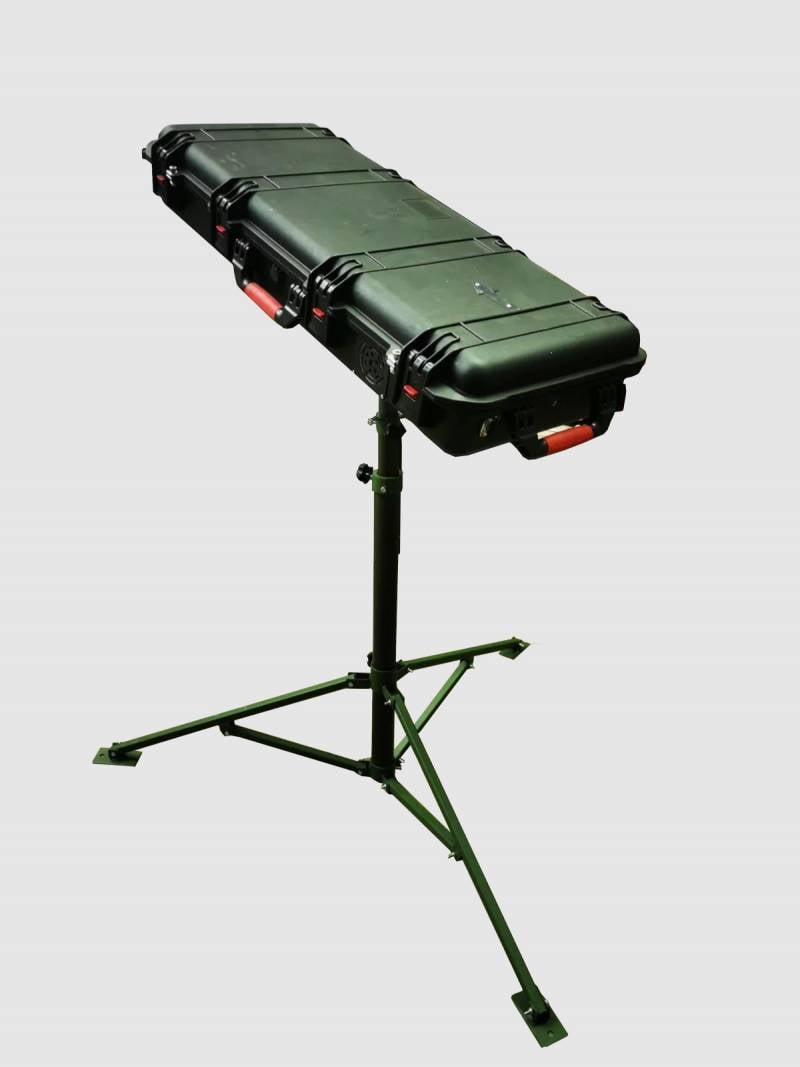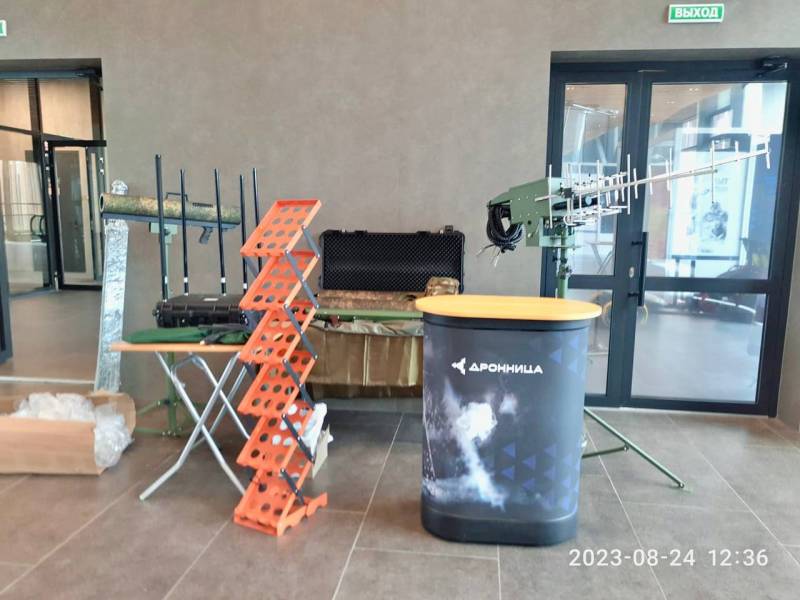Argus-Antifuria UAV suppression system

Product "Argus-Antifury" on a tripod
A number of domestic enterprises, incl. industry newcomers are working on creating various means of countering unmanned aerial vehicles aviation and regularly demonstrate new developments. Thus, a few months ago the Argus-Antifury suppressor complex was first presented. It was tested in the Special Operations area, and then modified with the introduction of new functions and capabilities.
To protect cities
The Moscow research and production association "Kaysant" took up the topic of electronic warfare systems not so long ago, but by now it has managed to present a number of samples of different classes. Customers are offered complexes with various characteristics in portable and stationary versions.
Thus, in March, the development company for the first time demonstrated a stationary UAV suppression system called Argus-Antifury. This product was developed proactively, taking into account the needs and requirements of the Russian army and civilian structures of Donbass. An electronic warfare system was created capable of suppressing Ukrainian artillery reconnaissance UAVs. The main targets for it were considered the “Valkyrie”, “Leleka” or “Furia” devices - hence the name of the station.
In March, it was reported that the suppressor station would soon go to Donetsk to protect the city and test it in a real situation. How successful such events were, and what results Argus-Antifuria showed, unfortunately, was not reported.

Apparently, the product coped with the main tasks, and NPO Kaysant began demonstrating its new development to potential customers. In addition, the development organization participates in specialized exhibitions, where it shows its complex and exchanges experience with future operators and other creators of special equipment.
Based on the results of tests and trial operation, the Argus-Antifuria complex was modified. The fact is that initially it could only produce interference and suppress an air target. At the same time, it was necessary to detect enemy UAVs and point the station at them using third-party means. In this regard, the modernized suppressor added its own direction finder. The development of such a modification of the complex was announced in mid-October.
Apparently, NPO Kaysant will master the production of the updated suppressor and begin offering it to customers. In addition, we can expect that such equipment will reappear in the combat zone or in the immediate rear. "Argus-Antifuria" was used to protect Donetsk, and the modernized product will also find use in the defense and defense of cities.
Stationary version
The Argus-Antifuria product is an electronic warfare system designed to suppress the most common enemy UAVs. It is characterized by increased performance characteristics, which, however, led to an increase in size and weight, and also influenced the methods of application.

Antennas of the complex
The complex without additional funds weighs approx. 18 kg, which excludes its use as a portable “anti-drone gun”. It is proposed to place it in a stationary position using a tripod machine or other supporting device. The tripod included in the delivery set has a telescopic design and allows you to raise the suppressor to a height of 3 m. Installation on a car or other self-propelled platform is also possible.
The suppressor is made as a single block. The electronics are housed in a rectangular or more complex shaped housing. At its front end, seven directional antennas are placed at once to output signals of different frequencies and configurations. On the back of the body there are handles for aiming and controls. The design of the complex and tripod provides almost circular horizontal guidance and vertical guidance within a sector 145° wide.
During operation, Argus-Antifuria consumes power of at least 420 W. Energy is supplied from the complex’s standard battery in a sealed housing. It is also possible to use external energy sources, such as available electrical networks, cars or mobile generators.
The complex is capable of jamming in seven different ranges used by unmanned aircraft of common classes and types. Thus, it suppresses GPS signals at L1 and L2 frequencies. Suppression of communication and control signals is provided in the 433 and 900 MHz bands, as well as 2,4, 5,2 and 5,8 GHz. The nominal power supplied to the antennas ranges from 10 to 20 W. The declared range is at least 1-3 km, depending on various factors.

In transport position
In the new modification, the Argus-Antifuria station received its own direction-finding device. Technical details of this development are not yet available, but the main functions and tasks are named. It is known that the direction finder detects signals from the communication systems of other unmanned systems and, probably, determines the direction to them, and also indicates the operating frequency. The operator can then point the station itself at the target, select the optimal interference and carry out the attack.
Functions and Features
Thus, the Argus-Antifuria product in its latest modification is a full-fledged complex for combating enemy UAVs. It is capable of identifying such targets and suppressing them with directed interference of the required frequency and optimal configuration. At the same time, as can be judged, an effective impact on a variety of modern Drones, both commercial models and special military developments.
The operating principles of the Argus-Antifury suppressor are quite simple, well known and have been proven for a long time. Suppression of navigation signals is provided, as well as interference with control signals and video or data transmission. In both cases, the UAV loses the ability to solve the assigned task.
The advantage of the new electronic warfare system from NPO Kaysant is its improved characteristics. Due to the increased power, it differs from other similar products, incl. portable “guns” with a longer range. This plus completely compensates for the large mass and the impossibility of portable use.

Developments of NPO "Kaysant" at one of the recent exhibitions
Despite the weight, several application options are provided with installation on different bases and chassis. Due to this, it is possible to create stationary and mobile suppression posts, which allows for more flexible implementation and use of the complex. At the same time, the increased range of use will be useful regardless of the installation method.
In general, the Argus-Antifuria product is of some interest from a technical and practical point of view. This project does not contain fundamentally new and revolutionary solutions, but its result is a successful and effective product. It is capable of solving assigned tasks and ensuring the protection of fairly large areas from enemy unmanned aircraft and related threats.
Increased interest
Thus, the domestic defense industry, represented by industry leaders and new enterprises, continues to create means of countering and suppressing unmanned aerial vehicles. Over the past year and a half, the industry has presented a large number of such developments in different form factors and with different characteristics, but with common functions and similar capabilities.
Specialized anti-drone electronic warfare systems are actively supplied to the troops involved in the operation and are constantly used by them. We have gained a lot of experience, which is used in the development of existing projects and in the development of new ones. A good example of this was the Argus-Antifury project from the Kaysant NGO. It was created taking into account the needs of troops and civilian structures, and after testing it was finalized and improved.
It is quite possible that Argus-Antifuria and other Kaysant developments will go into large production and become widespread among the military, law enforcement and commercial structures. However, these products will have to face competition - the rapid development of the trend and the creation of a mass of new designs has the same consequences. Finding customers in such an environment will be another important test for new complexes, which will show their real potential.
Information